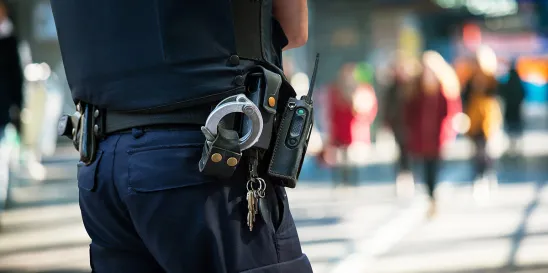Police across the United States are increasingly relying on emerging technologies to make their jobs more efficient and to increase public safety. Police are using drones, license plate readers, gunshot detection systems and even robots to reduce injury and harm. To no one’s surprise, law enforcement agencies have struggled with retention and hiring during the last two years, and many police departments are now looking to new technologies to fill those gaps and keep their communities safe. However, with these new technologies comes concern for the loss of privacy. Technology can be a great law enforcement tool; however, a line should be drawn to protect our privacy, while also meeting the expectation that the police will protect the public. Nevertheless, new technologies continue to find their way into law enforcement.
In Mountain View, California the police use two drones that have helped officers mitigate many dangerous situations, conduct search efforts and locate weapons. As a result, the department is looking to expand the program to include more drones with improved features such as longer flight time, higher video quality, and infrared capabilities, which help detect body heat. A drone can be a tool that not only helps accomplish current police goals, but also offers the potential to do the work better, more safely, and more efficiently. The key to accepting these technological advances is transparency with the public to let people know how and when the technology will and will not be used.
Beyond drones, police departments across the country have been using other kinds of technology to secure cities and towns. For example, ShotSpotter is a gunshot detection system that alerts polices to gunfire within the device’s specific coverage area by using sensors and algorithms to determine which loud bangs are likely gunshots. Within just 60 seconds, ShotSpotters can alert police to the precise location in which the gunshots were heard. By using these systems, police can more efficiently deploy their resources. This is a great benefit for cities that have had to cut back on neighborhood patrols due to officer shortages.
Some police departments have also started using Coplogic, which is an incident-reporting software. The software platform allows community members to submit crime reports for minor incidents, which in turn helps to free up officers’ time to focus on other, more serious crimes and incidents.
Police are even using robots to assist in carrying out their duties. For example, the New York City Police Department started using a robotic dog to help with surveillance and dangerous situations. The robot, Spot, weighs about 70 pounds and is able to climb stairs, easily walk through loose gravel, and carry up to 30 pounds of equipment while using its built-in cameras to survey the area. However, residents pushed back at the additional surveillance by Spot and the department stopped using it. This example reinforces the idea that education and transparency with new technologies are vital to the success of these programs and the use of technology among law enforcement.
For now, police departments will continue to navigate the use of new technologies through research and community involvement and input in the cities they serve.



 />i
/>i

